Once known as the top chipmaker in the Android world, Qualcomm has lately been criticized for delivering sub-par performance and poor battery life with its flagship chipsets. Samsung’s Exynos 2200 and Mediatek Dimensity 9000 are being touted as better mobile chips than Qualcomm’s offerings. Now, the company has announced the Snapdragon 8+ Gen 1, which promises to fix all the shortcomings seen in the 8 Gen 1. So the question that arises is – Can the Snapdragon 8+ Gen 1 beat its own predecessor which was released merely six months ago? Let’s go ahead and compare the Snapdragon 8 Gen 1 vs Snapdragon 8+ Gen 1 to find out if Qualcomm has managed to fix the thermal and throttling issues. On that note, let’s move to the comparison.
Snapdragon 8 Gen 1 vs Snapdragon 8+ Gen 1: What’s New (2022)
We pit Snapdragon 8 Gen 1 vs Snapdragon 8+ Gen 1 in terms of CPU, GPU, ISP, AI engine, modem and wireless connectivity, and more in this in-depth comparison. You can move to any relevant section by expanding the table below.
Snapdragon 8 Gen 1 vs Snapdragon 8+ Gen 1: Specs Comparison
Here is a specs comparison between Snapdragon 8 Gen 1 and Snapdragon 8+ Gen 1. Go through the on-paper specs to get a quick overview of these high-end chipsets from Qualcomm.
| Snapdragon 8 Gen 1 | Snapdragon 8+ Gen 1 | |
|---|---|---|
| CPU | Kryo CPU, Octa-core CPU | Kryo CPU, Octa-core CPU |
| CPU Cores | 1x 3.0GHz (Cortex-X2) 3x 2.5GHz (Cortex A710) 4x 1.8GHz (Cortex A510) | 1x 3.2GHz (Cortex-X2) 3x 2.5GHz (Cortex A710) 4x 1.8GHz (Cortex A510) |
| Process Technology | Samsung’s 4nm | TSMC’s 4nm |
| GPU | Adreno 730; Snapdragon Elite Gaming | Adreno 730; Snapdragon Elite Gaming |
| Machine Learning and AI | 7th-gen AI Engine; 3rd Gen Sensing Hub; 27TOPS | 7th-gen AI Engine; 3rd Gen Sensing Hub; 27TOPS |
| ISP | Triple 18-Bit ISP; Snapdragon Sight | Triple 18-Bit ISP; Snapdragon Sight |
| Camera Capability | 3.2 Gigapixels per second, 240 12MP photos in one second | 3.2 Gigapixels per second, 240 12MP photos in one second |
| Video Capability | 8K HDR, 18-bit RAW, Dedicated Bokeh Engine | 8K HDR, 18-bit RAW, Dedicated Bokeh Engine |
| Modem | X65 5G Modem-RF, Up to 10 Gbps Peak Download | X65 5G Modem-RF, Up to 10 Gbps Peak Download |
| WiFi Support | Wi-Fi 6 and Wi-Fi 6E | Wi-Fi 6 and Wi-Fi 6E |
| Bluetooth | Bluetooth 5.2, LE | Bluetooth 5.3, LE |
Snapdragon 8 Gen 1 vs Snapdragon 8+ Gen 1: CPU
In this comparison between Snapdragon 8 Gen 1 and Snapdragon 8+ Gen 1, let’s first discuss the CPU details. The CPU on both chipsets is largely the same. They are built on ARM’s latest v9 architecture (64-bit), promising to bring better power efficiency and performance to the latest flagship phones from your favorite Android phone maker.
However, there’s one difference here, though. The Snapdragon 8 Gen 1 is developed on Samsung’s 4nm process whereas the Snapdragon 8+ Gen 1 has been built on TSMC’s 4nm process node. Qualcomm has moved from Samsung to TSMC’s foundry to fix thermal issues emanating from Snapdragon 8 Gen 1 chipset. In our YouTube video below, you can check out how badly the Snapdragon 8 Gen 1 throttled on some of the recent flagship phones from Vivo, Motorola, Samsung, and others.
Talking about the cores, both the processors pack a single Cortex-X2 core, three Cortex A710 cores, and four Cortex A510 cores. The Cortex A710 and A510 cores are clocked at 2.5GHz and 1.8GHz, respectively, on both the processors. The Cortex-X2 core on Snapdragon 8+ Gen 1, however, goes a notch higher and is clocked at 3.2GHz as opposed to 3GHz on the standard 8 Gen 1.
This means the CPU has seen a jump of 10% in performance. That is not all. Due to TSMC’s enhanced fabrication process, the CPU on Snapdragon 8+ Gen 1 has also seen a power efficiency improvement of 30% in comparison to Snapdragon 8 Gen 1, which is amazing. This was one of the main pain points of SD 8 Gen1, and it seems Qualcomm may have fixed the thermal issue with SD 8+ Gen1. We cannot say for sure at the moment, but expect a hands-on benchmark and throttling test soon.

The improved power efficiency is also reflected in real-world usage. Qualcomm claims the Snapdragon 8+ Gen1 can deliver an additional 5.5 hours of talk time, 50 minutes longer usage of social media apps, and a total of 17 hours of music playback. In terms of CPU, It’s clear that Qualcomm has upped the game and seems to have resolved the power efficiency issue with Snapdragon 8 Gen 1, despite clocking the powerful Cortex-X2 at an even higher frequency. And well, it seems like that’s partly due to TSMC’s advanced fabrication process.
Snapdragon 8 Gen 1 vs Snapdragon 8+ Gen 1: GPU
Talking about the GPU, both the Snapdragon 8 Gen 1 and 8+ Gen 1 come with Qualcomm’s in-house Adreno 730 GPU. It supports features like Snapdragon Elite Gaming and HDR gaming. Qualcomm has managed to increase the clock speed of the GPU by 10% on the new Snapdragon 8+ Gen 1, but hasn’t shared the exact numbers.
At the same time, the chipmaker has reduced GPU power consumption by 30% when compared to Snapdragon 8 Gen 1. As this is an iterative upgrade, we did not expect Qualcomm to improve the GPU by many folds, but it seems that switching to TSMC’s node process has borne additional fruit. Gamers are going to love the GPU performance and power efficiency on the Snapdragon 8+ Gen 1, while witnessing reduced heating and thermal throttling issues.
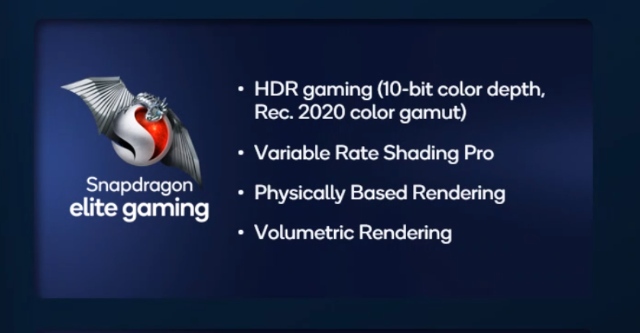
In addition, it supports the usual Qualcomm features such as volumetric rendering for unparalleled realism while playing graphics-heavy games. You also get HDR gaming with 10-bit color depth and Rec. 2020 color gamut. Not to mention, the Snapdragon 8+ Gen 1 comes with Variable Rate Shading Pro for a smoother gaming experience. All in all, the GPU on the Snapdragon 8+ Gen 1, just like the CPU, has got a meaty upgrade in terms of power efficiency and a slightly higher clock speed.
Snapdragon 8 Gen 1 vs Snapdragon 8+ Gen 1: ISP
In terms of ISP, both the Snapdragon 8 Gen 1 and 8+ Gen 1 are on a similar footing. Both the chipsets come with Qualcomm’s impressive triple 18-bit ISP that can capture 3.2 gigapixels per second. It lets you to record 8K HDR videos and snap a 64MP photo with zero shutter lag at the same time. For low-light imagery, these processors can capture 30 images in a second and merge them to get a brighter and more visible image.
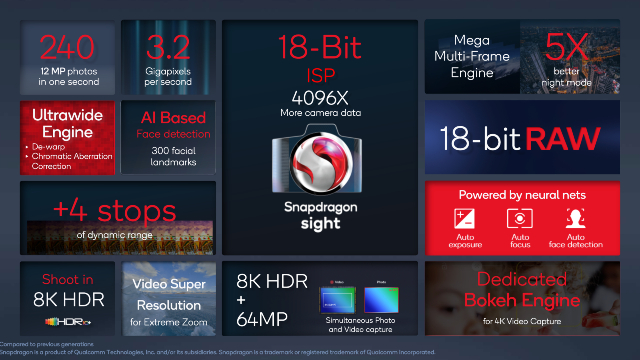
The triple ISP also brings support for staggered HDR, multi-frame capture, and triple exposure to reduce noise from captured images and videos. Qualcomm’s Snapdragon Sight is one of the main features behind the powerful camera capability, and it seems both processors take advantage of the triple-ISP architecture.
Snapdragon 8 Gen 1 vs Snapdragon 8+ Gen 1: AI and ML
As for the AI and ML capabilities, Qualcomm has packed its 7th-gen AI Engine on Snapdragon 8+ Gen 1, which is also available on the standard 8 Gen 1. While the chipmaker has not put forward its TOPS number, going by the earlier estimate, the AI engine can perform 27 trillion operations per second. For INT16 operations, it can deliver 13 TOPS. Having said that, the AI engine on SD 8+ Gen1 offers 20% better performance per watt in comparison to SD 8 Gen1. That means you will get better battery life while using AI and ML-based features.
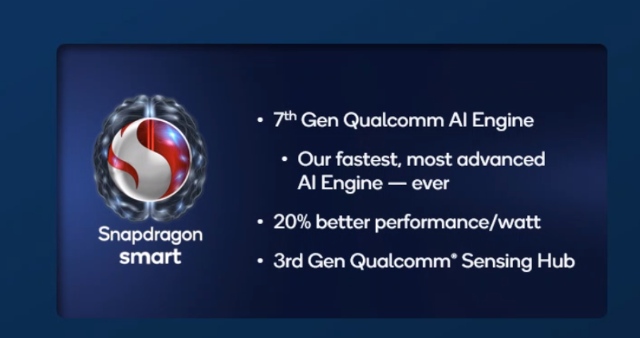
It also comes with Qualcomm’s 3rd-gen Sensing Hub, which offers a low-powered AI system for tasks that don’t require much power. The new architecture can intelligently offer AI experience without adversely affecting the battery life. In line with CPU and GPU, here too, Qualcomm is focusing on improving thermal efficiency.
Snapdragon 8 Gen 1 vs Snapdragon 8+ Gen 1: Modem and Wireless Connectivity
As far as the modem is concerned, the Snapdragon 8 Gen 1 and 8+ Gen 1 pack Qualcomm’s latest Snapdragon X65 5G modem, which is integrated into the logic board. Qualcomm no longer offers a discrete modem for both the chipsets. It can deliver speeds up to 10Gbps with support for more networks, frequencies, and bandwidths globally. Not to mention, the 5G modem supports carrier aggregation as well.

Along with that, both the processors come with Qualcomm’s FastConnect 6900 Mobile Connectivity System, which offers Wi-Fi 6 and 6E support, and the speeds can go up to 3.6Gbps. One crucial addition to the Snapdragon 8+ Gen 1 chipset is that it now supports the latest Bluetooth 5.3 standard along with LE Audio and Qualcomm aptX Lossless tech. The Snapdragon 8 Gen 1 only supports Bluetooth 5.2 and LE. Overall, in terms of connectivity, both offer similar features, but you get Bluetooth 5.3 on the Snapdragon 8+ Gen 1.
Is Snapdragon 8+ Gen 1 More Power Efficient than 8 Gen 1?
So that was our comparison between Snapdragon 8 Gen 1 vs Snapdragon 8+ Gen 1. As you can notice, it seems Qualcomm has managed to fix the thermal issue with the Snapdragon 8+ Gen 1 – at least that what it looks like on paper. With 30% power efficiency in CPU and GPU, it can avoid all the brickbats the company has been receiving from users and critics alike. Anyway, that is all from us. If you want to learn about how the Snapdragon 8 Gen 1 and A15 Bionic compare, go through our article. And if you have any additional questions, let us know in the comments section below.













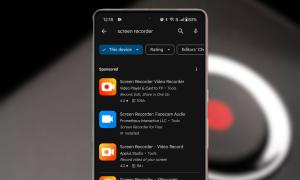
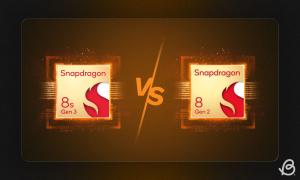
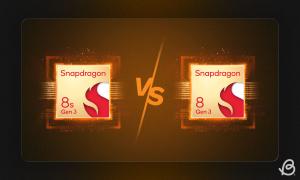

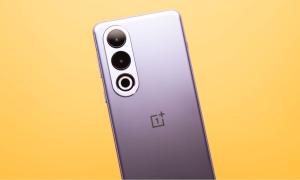
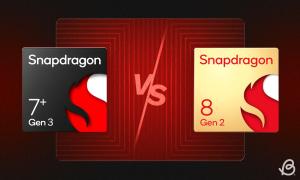
Moi,onko snapdragon 8 gen 1 ja 8+ gen 1 sama pakkaus